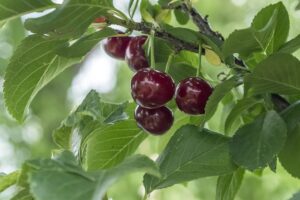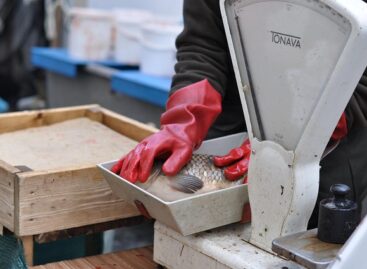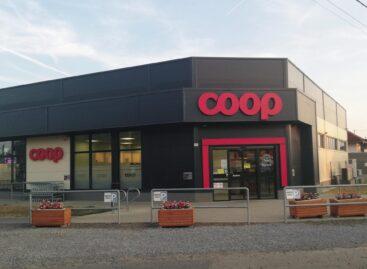Dramatic sour cherry harvest expected after severe frost damage: sector faces situation not seen in decades
The Hungarian sour cherry season officially starts in mid-June, but this year promises particularly worrying prospects. Both the domestic and European harvests promise to be weak, and processed stocks are also at a low level. As a result, the market awaits the first harvested quantities with increased interest and tension – such an increase has not been seen in the sector for decades.

(Photo: Pixabay)
Domestic sour cherry orchards cover approximately 12,000 hectares, of which nearly 55% are located in the north-eastern part of the country, and another 25% are located in Pest and Bács-Kiskun counties. Over the past ten years, the yield has typically ranged between 55,000 and 80,000 tons, but the trend in recent years has been worsening: the area under cultivation has decreased (by about 2,000 hectares), the plantations are aging, and economic difficulties are not conducive to stable production. In a balanced year, the Hungarian cherry sector is capable of producing 60,000 to 70,000 tons, but in 2024 only 53,000 tons were harvested – and this year’s outlook is even bleaker.
It started well, then came the April frost
The vegetation started at a normal pace: the spring flowering was encouraging, especially in light of last year’s drought and hot summer. However, sudden, devastating frosts across the country in early April caused serious damage to the orchards – not even the cherries escaped. At dawn on April 7, most of the country experienced a temperature drop of between -2 and -6 °C, with temperatures dropping below -8 °C in several regions. These extreme values resulted in dramatic yield losses on flowering trees. The northern and northeastern parts of the country – where more than half of the Hungarian cherry orchards are located – were particularly badly affected. The next day, on April 8, frost reached the orchards between the Danube and Tisza rivers with temperatures between -4 and -8 °C, so practically the entire cherry-growing area of the country was affected by the cold snap. After the two critical nights, only the immediate areas of Kisalföld and Lake Balaton escaped with relatively moderate damage – however, these only constitute a small part of the national orchards. On May 10, another cold wave swept through the northeastern region, causing further frost damage to the fruit buds that had already begun to develop.
Drastic decline: historic low on the horizon
Due to the frosts, a drastic decrease in the domestic sour cherry harvest is expected. According to the preliminary forecast, the national harvest could be around 35 thousand tons, with a +/-15% difference. This could be one of the weakest values of all time. In the case of early-ripening varieties such as Meteor, Érdi jubileum and Érdi bőtermő, the yield loss is 80–100% – the yield is practically zero. This is particularly sensitive to the processing industry, as these varieties would provide the raw material for the first part of the season. Cigánymeggy also suffered significant losses. The clustered varieties – Debreceni bőtermő, Újfehértói fürtös, Kántorjánosi, Petri, Éva – show a somewhat more favorable picture, but here too we can talk about a loss of up to 50%. It is important to mention that fruit shedding – the so-called “cleaning shedding” – is still ongoing, so the final yield may change even further. On the positive side, the size of the fruits may change favorably due to the smaller number of fruits.
Plant protection and prospects
Monilial infections – which often cause serious problems during the flowering period – have made things difficult for producers this year as well. Fortunately, those who protected themselves in a timely and regular manner were able to avoid major damage, so quality problems do not currently pose a serious threat. Market players and processors are therefore looking forward to this season with great anticipation, which will affect not only the players in the sector, but also consumers in the longer term: low stocks, high prices and disrupted supply chains may characterize the period ahead.
FruitVeb
Related news
Balázs Hankó: there is huge potential at the Gödöllő University
🎧 Hallgasd a cikket: Lejátszás Szünet Folytatás Leállítás Nyelv: Auto…
Read more >Cattle farmers receive new targeted support
🎧 Hallgasd a cikket: Lejátszás Szünet Folytatás Leállítás Nyelv: Auto…
Read more >István Nagy: there will be enough Hungarian fish for every family’s table
🎧 Hallgasd a cikket: Lejátszás Szünet Folytatás Leállítás Nyelv: Auto…
Read more >Related news
Superbrands celebrated again in 2025
🎧 Hallgasd a cikket: Lejátszás Szünet Folytatás Leállítás Nyelv: Auto…
Read more >László Pekó: “Coop isn’t just a network, it is a way of life – and has been for 30 years”
🎧 Hallgasd a cikket: Lejátszás Szünet Folytatás Leállítás Nyelv: Auto…
Read more >(HU) Karácsonyi tv-reklámok 2025 – indul a közönségdíj szavazás
🎧 Hallgasd a cikket: Lejátszás Szünet Folytatás Leállítás Nyelv: Auto…
Read more >






